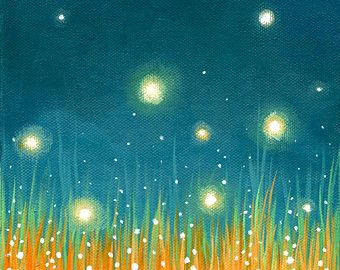

But not for fireflies. Tonight they were out by the thousands, myriad tiny points, flashing only while ascending. I guess that in early evening they do loops, but put on their lamps only when going upwards. The impression was of a swarm of rising sparks.
Several years ago I was standing by a vacant lot near here, which had grown up to tall grass. The fireflies there were so dense that they had the appearance of sparks rising from burning dry wood, not just thousands but seemingly almost millions of them.
Back in 1954 on my first visit to the Florida Everglades, one night my little group walked into Royal Palm Hammock on a trail that passed through a forest of gumbo limbo and pigeon plum. The fireflies were huge, and very slow, their individual flashes lasting for several seconds. My next night visit there was in 2001, and as I entered the hammock I was anxious to see whether those fireflies that I remembered well from so long ago would still be there. Yes, they were, spiraling upwards among the dark trees, in long, slow trajectories of flickering yellow-orange light.
In Nova Scotia, the American Indians used to say that the grilse start up the rivers in early summer "when the fireflies come." A grilse is a small salmon, usually weighing three to five pounds, that is making its first upstream journey from the sea. When we were camping on a bay south of Halifax I would often walk up the Little River in early evening, hoping for a grilse. A salmon this size is great fun on a light flyrod, and one of them would keep my small family in fresh fish for two or three days. I was often successful, and as I was returning at dark carrying my catch, I would remember the Indians and look for the fireflies. They were always there in the old, overgrown fields, making swarms of rising sparks.
© 2016 Stevens Heckscher